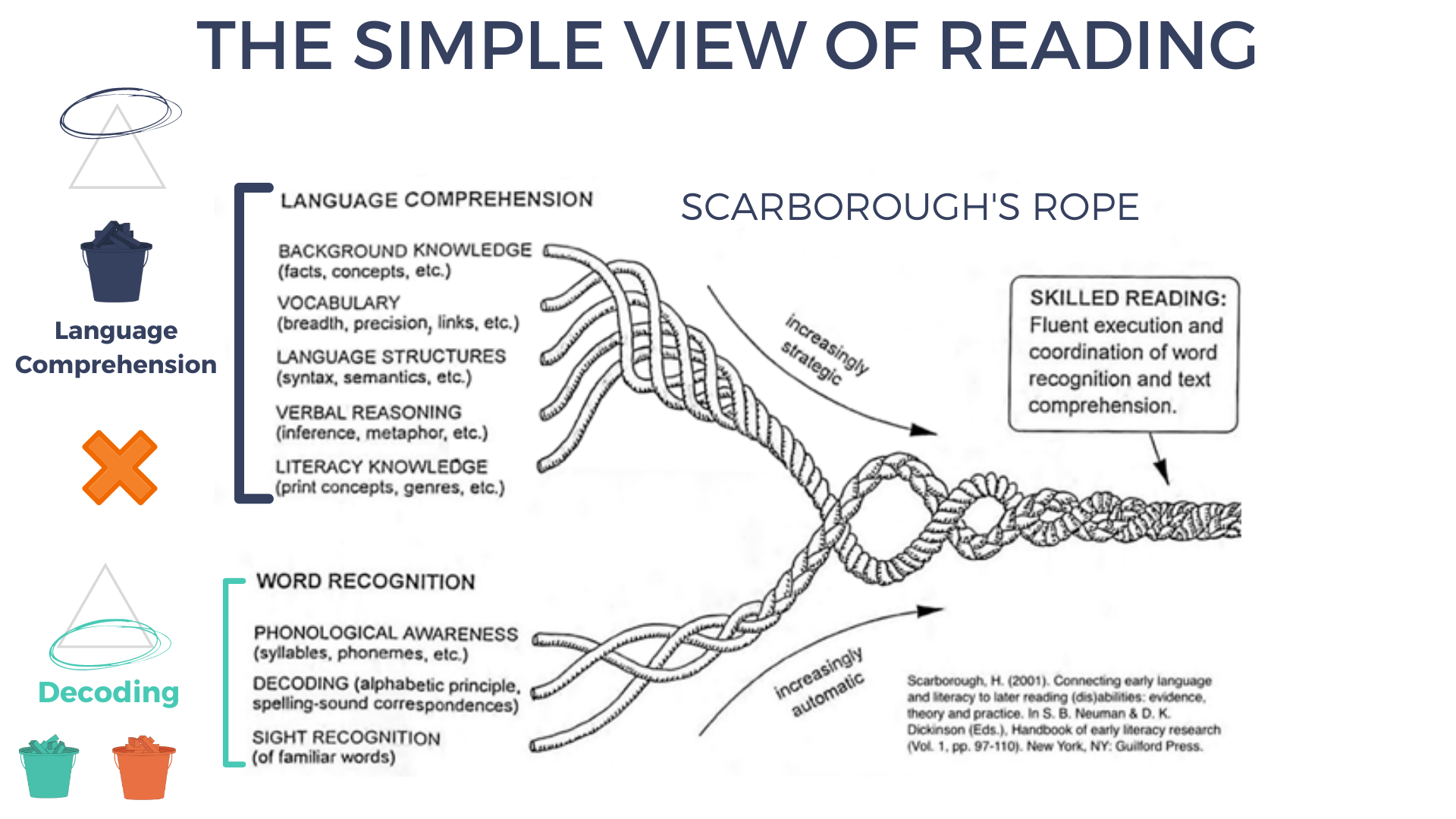The One Thing You Can't Leave Out in Reading Intervention
Hey Friends!
We’re so excited to be back and are ready to jump into one of our FAVORITE topics, this one is a juicy one so we’re going to dive right in.
We’ve been at this for a while now! We’ve worked with hundreds of struggling students in a variety of different settings and one of the most important things we’ve learned is that
Students DO NOT struggle with reading for the same reasons!
And this is SO important to recognize, because if we don’t recognize this, then we try to support struggling readers using all the same strategies, and the bottom line is that just doesn’t work. For many reasons. You wouldn’t treat a broken leg in the same way you would treat a pulled muscle even though the result of both is that your leg hurts.
To support ALL struggling readers, we need to know WHY they’re struggling to read!
Once we know WHY they’re struggling to read, we can target our instruction and provide the right type of activities to get our students onto grade level and beyond.
The one thing you truly cannot leave out in your reading intervention = skill analysis (assessment) and data tracking.
Assessing and tracking student performance over time will allow you to understand why your students are struggling and allow you to target activities to their specific needs. What we will say is that there is no “right” or “wrong” way to track data. There are a million ways you can do this “correctly.” The only thing we want to be sure of is that we are in fact looking at general strengths and weaknesses and using that information to guide our instruction.
So, let’s start from the beginning -
When we think about struggling readers, they often fall into one of two categories.
1 - Readers who struggle with word recognition
These students struggle to connect sounds to print.
2 - Readers who struggle with language comprehension
These students struggle with semantics and higher-order language.
This classification is known as the “simple view of reading” coined by Gough and Tunmer in 1986.
Significant research has been done on the “simple view of reading” model and it’s been expanded over the years to better understand which key factors play into the “simple view of reading.” Hollis Scarborough put together a lovely visual in 2000 that has helped us to understand the skills that need to come together to connect the bottom of the literacy processing triangle with the top.
And if you know us at all, you know we love viewing reading acquisition from the lens of the Literacy Processing Triangle so we’ve added that into the model below. The top of the triangle represents semantics (language processing, the navy bucket of skills), and the bottom bases are comprised of phonology (the sound structure of our language, the orange bucket of skills) and orthography (the print structure of our language, the teal bucket of skills).
Students can struggle with the bottom part of that rope or the top part of that rope, but at the end of the day, students cannot be skilled readers, without having BOTH sets of skills. And when students struggle to read, they may be struggling in any of those subsets of skills.
And while we can ABSOLUTELY provide solid instruction that hits on ALL of these key components -
The BEST way to support struggling readers is to specifically target their individual areas of need and to monitor their progress in those areas.
So what are the skills we should be tracking in order to target our reading intervention?
When we think about assessment and data tracking we want to use a top-down approach.
We start by looking at the big picture.
1 - Do students struggle with word recognition? Language comprehension? Both?
Essentially, can students sound out the words? Do they know what the words, sentences, and passages mean?
Then from there, we want to start drilling down.
2 - Which strands of Scarborough’s rope or which parts of the 5 Core Components of Literacy are being impacted?
How are the students’ phonological awareness skills? Phonics skills? Vocabulary knowledge? Fluency ability? Reading comprehension skills?
Finally, we want to look at a granular view of skills to determine which specific skills need to be targeted.
3 - Which specific subskills aren’t developed?
We use this breakdown in our clinic to start to think about individual student strengths and weaknesses. Depending on your setting, you may not need to get all the way to the granular view for each student, but it’s still helpful to understand that those subsets of skills work together to create proficiency in higher-level categories.
Once you’ve learned where those specific areas of need are, you can choose activities specifically to increase proficiency and automaticity of the skills that are not fully developed.
Stay tuned because next, we will be sharing which types of assessments you can use to identify areas of need and then specifically how you align activities based on those identified areas of need!
In the meantime, we wanted to share our How to Create SOR-Aligned Goals & Track Data. In this free workshop, you will learn how to use the data you already have to set appropriate goals, uncover the key to setting up your lessons to make data tracking easy and learn how to manage & organize your data. Plus, you’ll get a free data-tracking template!




